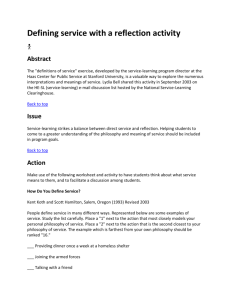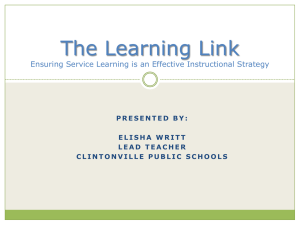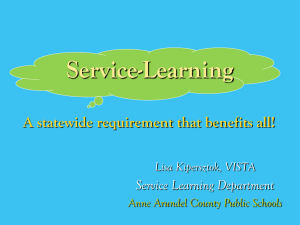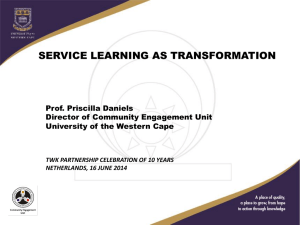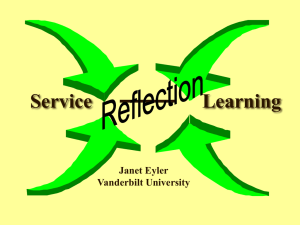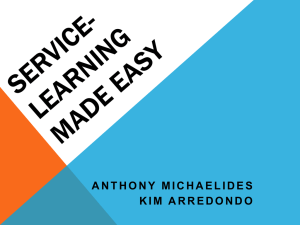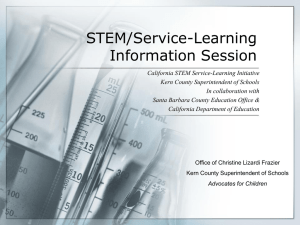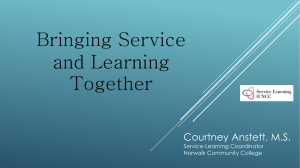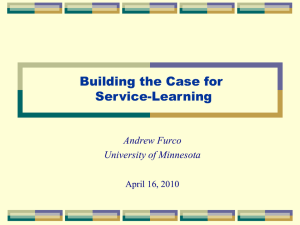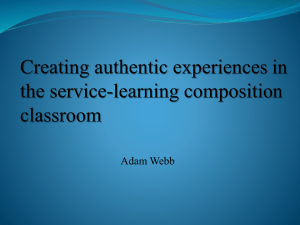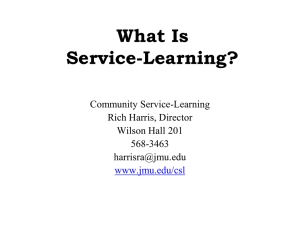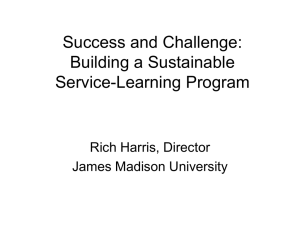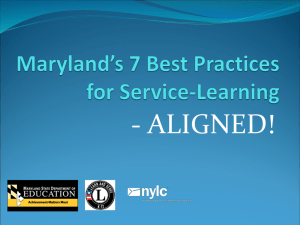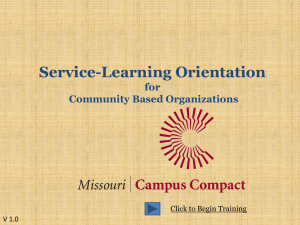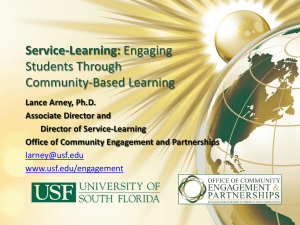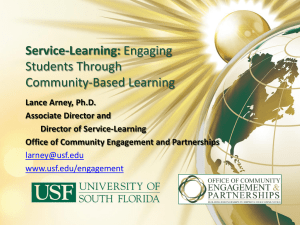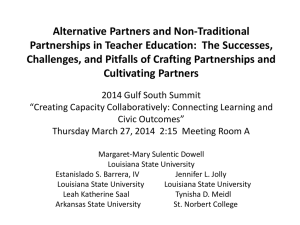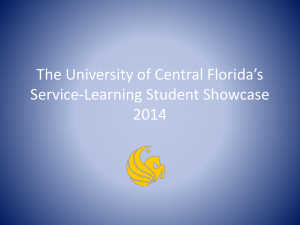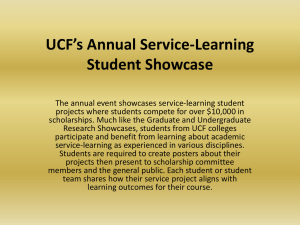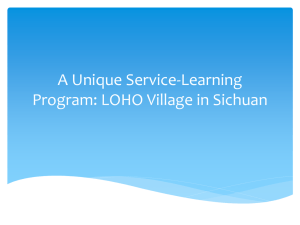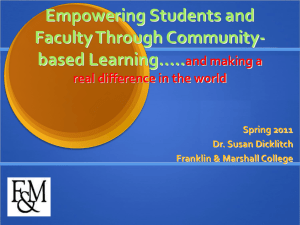here
advertisement
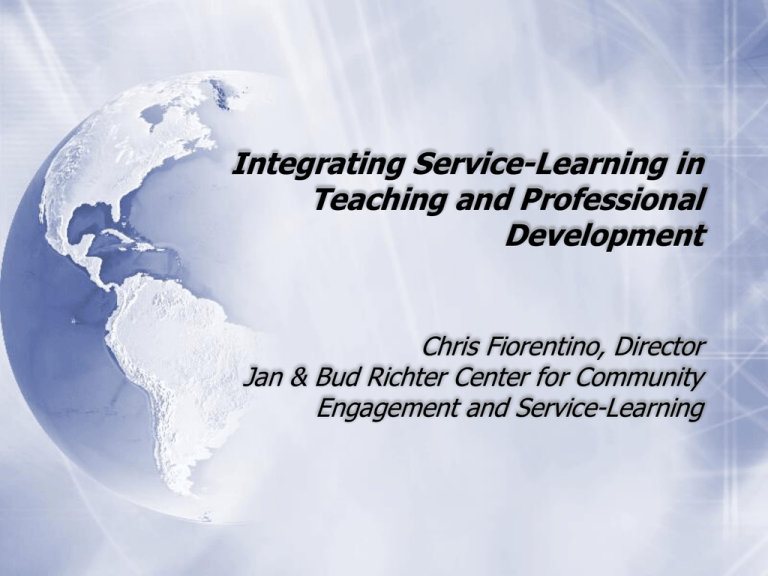
Integrating Service-Learning in Teaching and Professional Development Chris Fiorentino, Director Jan & Bud Richter Center for Community Engagement and Service-Learning What is Service-Learning? Service-learning is a teaching and learning method where students learn by active participation in organized service that addresses community needs and is linked to academic study through structured reflection. The community needs may include direct service to people in need, improvement of community resources, applied research, community outreach and education, or policy analysis and advocacy. The academic study may be in any discipline or combination of fields. Substantial research exists documenting the power of service-learning to positively impact students, faculty, and the community served. Student Personal Development Service-learning has been shown to: Increase sense of personal efficacy Contribute to personal identity Impact moral development Improve leadership skills Effect communication abilities Student Social Outcomes Service-learning has been shown to: Reduce stereotypes Improve racial understanding Increase sense of social responsibility and citizenship skills Heighten commitment to service Increase involvement in volunteerism after graduation Impact on Student Learning Service-learning has been shown to: Positively impact academic learning Accentuate ability to apply what is learned to “real world” settings Improve demonstrated complexity of understanding, critical thinking and cognitive development Student Career Development Service-learning has been shown to contribute to the many phases of students’ career development, including career identification, developing professional networks, enhancing resume and improved ratings of career satisfaction Relationship with Institution Service-learning has been shown to: Improve student satisfaction with the college experience Raise graduation rates of students involved (IRAP/OIE Study) Increase the likelihood that students will contribute financially to their alma mater after graduation Faculty Benefits Faculty who utilize service-learning report: Satisfaction with quality of student learning Commitment to research Increased propensity to integrate service-learning into other classes The downside…. Community Benefits Community partners report that their involvement with Fresno State community service-learning efforts: Improved capacity to serve clients Provide benefits that outweigh the cost Outcomes exceed initial expectations Overall agencies were extremely pleased with services provided by students The Transformative Power of SL Why Reflection? Without reflection, service-learning has little merit as an instructional tool. It is through the process of structuring and guiding a student’s reflective process where teachers can help students extract lessons from their community experiences. Reflection is generally considered to be the most critical step in linking the service & learning components of a service-learning course. Reflection: The essential ingredient Setting the Stage & Providing Feedback Providing for Gender Balance What about Service-Learning & RTP? Gelmon & Agre-Kippenhan Article Jendian “By the Numbers” Document Service-Learning Assistance Jan & Bud Richter Center (www.csufresno.edu/cesl) Faculty Service-Learning Modules (www.csufresno.edu/facultysl) Workshops and Seminars Faculty Service-Learning Mentor Community Partnerships Coordinator

